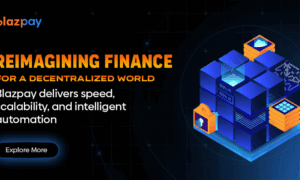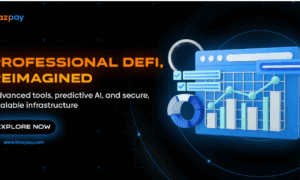From optimizing test frameworks with Playwright to pioneering AI-driven fraud detection, Priya Yesare has redefined what intelligent automation looks like in modern QA. In this exclusive TechBullion interview, she unpacks her journey from software development to leading AI-powered quality innovation at Asurion; blending academic rigor with enterprise impact. Discover how her work on explainable AI, predictive test selection, and BDD is reshaping release cycles, bridging the gap between technical teams and business stakeholders, and setting new standards for ethical automation. Priya also shares hard-won insights on overcoming adoption hurdles, fostering mentorship in evolving tech landscapes, and the skills that will define the next generation of QA professionals in an AI-first era.
You’ve had an impressive journey, from software developer to Principal SQA Automation Engineer. Can you share what initially drew you to Software Quality Assurance and how that early passion evolved into your current vision for AI-driven, intelligent automation?
Priya: I transitioned from software development to quality assurance because I’ve always been drawn to creating systems that are not just functional, but intelligent and resilient. I saw QA as more than just a final checkpoint—it’s a strategic layer that ensures software performs reliably in the real world. This perspective led me to modernize automation frameworks using tools like Playwright and Cucumber, which I detailed in my 2022 publication. As technology advanced, my interest naturally shifted toward AI-driven testing, including areas like fraud detection and intelligent test optimization. Today, I lead efforts to bring AI into QA pipelines, making testing faster, smarter, and more predictive.
Your academic work on Playwright, JavaScript, Cucumber, and AI-driven QA has garnered both research and industry recognition. How do you balance rigorous academic investigation with the practical needs of enterprise environments like Asurion?
Priya: For me, research and real-world work go hand in hand—both are driven by the goal of innovation. At Asurion, I tackle practical challenges like speeding up test cycles and boosting release confidence, which directly shape my research. My 2022 paper came from revamping legacy frameworks, while my AI work focuses on smarter, faster testing in CI/CD. I always aim to turn ideas into practical solutions, bridging research with real impact.
In your May 2022 publication, you highlighted Playwright’s advantages over Selenium and its capacity to significantly boost release cadences. Could you explain how these technical improvements translate into tangible business outcomes, like faster feature rollouts and enhanced customer satisfaction?
Priya: In my 2022 publication, I demonstrated how Playwright’s speed, cross-browser reliability, and native support for modern web apps outperformed traditional Selenium-based frameworks. By reducing flakiness and test execution time, we accelerated regression cycles by over 40%, directly enabling faster and more confident feature rollouts. This led to shorter feedback loops for developers and quicker time-to-market for product teams. Ultimately, these improvements enhanced customer satisfaction by delivering stable, high-quality features with greater speed and consistency.
Your May 2023 paper demonstrated how LightGBM and XGBoost can detect fraud with remarkable accuracy. What challenges do you see organizations facing when integrating AI models for financial security, and how does your work address those hurdles?
Priya: One of the biggest challenges with AI in regulated industries is making models both accurate and easy to understand. Tools like LightGBM and XGBoost are powerful, but their complexity can slow adoption. In my 2023 paper, I tackled this by using explainable AI to make fraud detection more transparent and trustworthy. I also focused on clean data and real-time pipelines to ensure the models work well in production. My goal is to make advanced AI not just smart, but practical and usable at scale.
Your March 2024 publication introduced the idea of AI-driven defect prediction and smart test selection within CI/CD pipelines. How do these innovations reduce execution time and manual effort, and what does that mean for QA teams in fast-paced agile environments?
Priya: In my 2024 publication, I introduced AI models that predict high-risk code areas and dynamically select relevant tests within CI/CD pipelines. This targeted approach reduces redundant test execution, cutting test cycle time by up to 50%. It also minimizes manual effort by automating prioritization and reporting, allowing QA teams to focus on exploratory and strategic testing. In agile environments, this means faster feedback, fewer production bugs, and a more efficient path from code to customer—all without sacrificing quality.
You emphasize ethical and transparent AI solutions, advocating for Explainable AI and inclusive tooling. Why is “explainability” so critical in QA processes, and how does it influence both developer trust and end-user confidence in emerging technologies?
Priya: Explainability is key in QA because it builds trust. Developers need to know why a test failed or why an AI flagged something. Without that clarity, teams are less likely to rely on AI insights. By adding explainable AI into testing tools, it makes model decisions easier to understand and act on. This boosts confidence, improves accountability, and helps both developers and users trust the systems we deliver.
You’ve been a strong proponent of BDD methodologies, especially with Cucumber. How has Behavior-Driven Development changed the conversation between technical and business teams, and what opportunities does BDD open up when combined with advanced AI-driven frameworks?
Priya: BDD with Cucumber has transformed collaboration by turning test cases into a shared language between technical and business teams. It ensures that quality goals are aligned with user expectations from the start. When combined with AI-driven frameworks, BDD goes beyond documentation—it enables smart test generation, adaptive scenarios, and continuous validation against business rules. This synergy enhances both coverage and clarity, allowing teams to innovate faster while staying aligned with real-world outcomes.
As someone who leads teams at the intersection of DevOps, AI, and QA, how do you foster innovative thinking and mentorship within your organization? Could you share a pivotal moment where your leadership style helped drive a significant breakthrough?
Priya: I foster innovation by encouraging open communication, hands-on learning, and a safe space to experiment and grow. A key breakthrough came when I led the shift to a behavior-driven testing framework. Initially met with hesitation, I mentored the team through the change, shared quick wins, and involved them in decision-making. This not only improved release speed but also strengthened team collaboration and confidence.
With generative AI on the horizon, you’re exploring intelligent test case generation and other cutting-edge ideas. What do you consider the biggest challenges for teams trying to adopt AI in QA today, and how do you see the field evolving over the next few years?
Priya: One of the biggest challenges in adopting AI for QA is data quality—without clean, contextual test data, AI models can produce irrelevant or unreliable results. There’s also a skills gap; many QA teams aren’t yet equipped to validate or fine-tune AI outputs. Looking ahead, I see QA evolving into a predictive, self-optimizing discipline—where AI not only runs tests but understands intent, adapts in real time, and supports continuous quality at scale.
For professionals aspiring to build a career in AI-driven QA or test automation, what foundational skills and mindset do you believe are crucial? And how can they stay ahead in a rapidly evolving tech ecosystem that increasingly values automation and intelligence?
Priya: To thrive in AI-driven QA, you need a solid grasp of programming, testing, and data analysis—plus a curious, problem-solving mindset. Knowing CI/CD, tools like Python or Playwright, and how models behave is key. Just as important is the ability to keep learning and think beyond just running tests. I always recommend exploring open-source projects, learning across disciplines, and understanding the ethics behind AI. The real leaders will be those who combine technical skill with big-picture thinking.



































